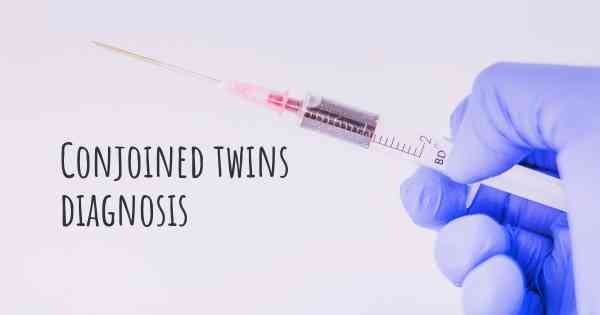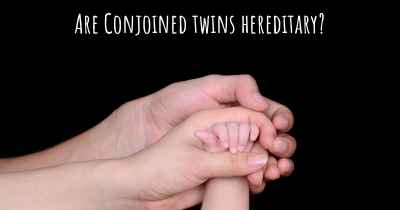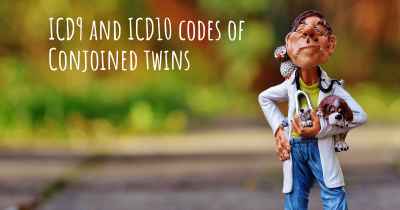How are Conjoined twins diagnosed?
See how Conjoined twins are diagnosed. Which specialists are essential to meet, what tests are needed and other useful information for the diagnosis of Conjoined twins

How are Conjoined Twins Diagnosed?
Conjoined twins, also known as Siamese twins, are a rare phenomenon where two babies are born physically connected to each other. This occurs when a fertilized egg fails to fully separate into two embryos during early development. Diagnosing conjoined twins typically involves a combination of prenatal imaging techniques, physical examinations, and medical history evaluations.
Prenatal Diagnosis
Prenatal diagnosis of conjoined twins is often the first step in identifying this unique condition. It allows healthcare professionals to assess the extent and location of the connection between the twins, which is crucial for planning appropriate medical interventions.
Ultrasound: Ultrasound imaging is commonly used to detect conjoined twins during pregnancy. It uses high-frequency sound waves to create real-time images of the developing fetus. Ultrasound can provide valuable information about the number of fetuses, their position, and any physical abnormalities. However, the accuracy of ultrasound in diagnosing conjoined twins depends on the experience of the sonographer and the position of the twins.
Magnetic Resonance Imaging (MRI): In some cases, an MRI scan may be recommended to complement the ultrasound findings. MRI uses a powerful magnetic field and radio waves to generate detailed images of the internal structures of the body. It can provide more precise information about the anatomy and potential complications associated with conjoined twins.
Physical Examination
After prenatal diagnosis, a thorough physical examination is conducted to evaluate the twins' overall health and determine the feasibility of surgical separation, if applicable. This examination involves:
Observation: The physical appearance of the twins is carefully observed, noting any visible abnormalities or shared organs. The location and extent of the connection are assessed, as well as the presence of any other associated birth defects.
Palpation: The doctor may gently feel the twins' bodies to assess the nature of the connection and identify any specific anatomical features that may influence the separation process.
Medical History Evaluation
A comprehensive medical history evaluation is an essential part of diagnosing conjoined twins. It helps healthcare professionals understand the potential causes and associated risks. The evaluation may include:
Maternal History: The mother's medical history is reviewed to identify any factors that could contribute to the occurrence of conjoined twins, such as maternal age, previous pregnancies, or exposure to certain medications or substances during pregnancy.
Familial History: The family history is examined to determine if there is a genetic predisposition to conjoined twinning. Although most cases of conjoined twins occur sporadically, certain genetic conditions or inherited factors may increase the likelihood.
Medical Imaging Review: Any prenatal imaging results, including ultrasound and MRI scans, are carefully reviewed to confirm the diagnosis and gather additional information about the twins' condition.
Consultation with Specialists
Diagnosing conjoined twins often involves a multidisciplinary approach, requiring consultation with various specialists. These may include:
Obstetrician: The obstetrician plays a crucial role in the prenatal diagnosis and management of conjoined twins. They coordinate the necessary imaging tests, monitor the pregnancy, and provide guidance to the parents.
Pediatric Surgeon: A pediatric surgeon with expertise in complex surgical procedures is consulted to assess the feasibility and potential risks of separation. They evaluate the shared organs, blood vessels, and other anatomical structures to determine the best approach for separation, if it is deemed possible.
Neonatologist: A neonatologist specializes in the care of newborn infants and may be involved in the diagnosis and management of conjoined twins. They provide medical support and guidance to ensure the best possible outcomes for the twins.
Genetic Counselor: In some cases, a genetic counselor may be involved to discuss the potential genetic causes and recurrence risks associated with conjoined twins. They provide information and support to the parents regarding the implications of the condition.
Overall, diagnosing conjoined twins requires a combination of prenatal imaging, physical examinations, medical history evaluations, and consultations with various specialists. This comprehensive approach helps healthcare professionals understand the unique circumstances of each case and develop appropriate management plans for the well-being of the twins.








